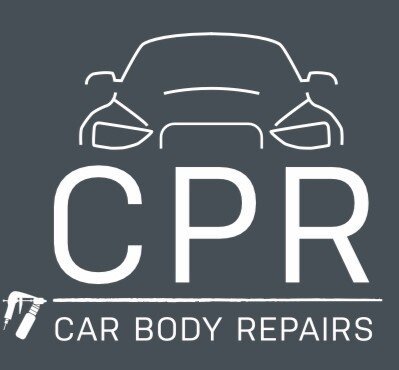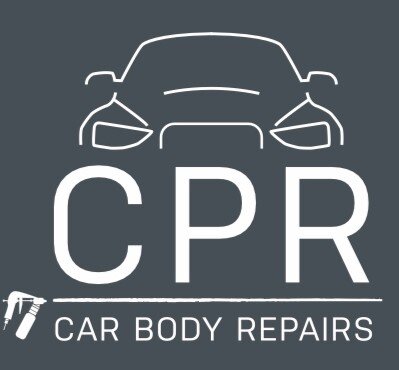Essential Advice for Car Bumper Scratch Repair Services
If you're like most drivers, the sight of a scratch or scuff on your car bumper can be a real headache. But fear not – we're here to guide you through the process! In this post, we'll cover everything you need to know about car bumper scuff and scratch repairs. From understanding the types of damage to prevention tips and ensuring the best results for your repairs, we've got you covered. Whether you've had a minor mishap or just spotted some wear and tear, keep reading for all the essential information.
What different types of bumper damage are there?
There are two main types of bumper damage - scuffs and scratches.
Scuffs are usually shallow and only affect the top layer of paint. They can often be fixed with a simple polishing or buffing.
Scratches, on the other hand, go deeper into the paint and can even reach the metal underneath. These will require more extensive repairs, such as sanding and repainting.
Why you should never ignore a scratched bumper?
While bumper scuffs may not seem like a big deal, they can actually lead to more serious problems down the road. For example, if left untreated, a small scuff can turn into a large crack. Cracks can weaken the structure of the bumper and make it more susceptible to further damage. In extreme cases, a cracked bumper may even need to be replaced.
What is the process for repairing a scratched bumper?
1. **Assess the Damage**: Evaluate the depth and severity of the scratch. Minor scuffs can often be buffed out, while deeper scratches may require more intensive repairs.
2. **Clean the Area**: Thoroughly clean the damaged area to remove dirt, grease, and debris. This ensures proper adhesion of repair materials.
3. **Buffing Minor Scuffs**: Use a buffing compound to polish out shallow surface scratches. This helps blend the damage with the surrounding paint.
4. **Sanding Deeper Scratches**: For deeper scratches, sand the area with fine-grit sandpaper. This smooths the surface and preps it for paint.
5. **Applying Primer (if needed)**: For exposed metal or plastic, apply a primer layer. This protects the surface and provides a base for the new paint.
6. **Painting**: Apply thin coats of paint that match the car's original colour. Allow each layer to dry before adding the next for a smooth finish.
7. **Clear Coat Application**: Apply a clear coat to protect the new paint and provide a glossy finish. This ensures the repair blends with the rest of the bumper.
8. **Polishing and Final Buffing**: Once the clear coat dries, polish the area to remove imperfections. A final buff gives the bumper a seamless, shiny look.
9. **Final Inspection**: Inspect the repair to ensure the bumper looks flawless. Professional body shops can handle more complex repairs to avoid worsening damage.
What is the cheapest bumper repair option?
The cheapest option for car body bumper repair is to buff out the damage and make it barely visible. This option is best for minor scuffs and scratches. For more severe damage, you may need to sand down the area and apply a new coat of paint. This option is typically more expensive than buffing out the damage. However, it will give you a better result and make your bumper look almost as good as new.
Audi Car Body Repair in Liverpool Body Shop
Choosing a repair kit
If you're planning on repairing the damage yourself, you'll need to choose a repair kit. There are many different types of kits available on the market, so it's important to do your research before making a purchase. We recommend choosing a kit that includes everything you need for the repair, such as sandpaper, paint, and clear coat. This will help you avoid making any mistakes during the repair process.
Repairing a scuffed bumper is a simple process that can be completed in a few hours. However, it's important to choose the right repair kit and follow the instructions carefully. There are lots of Youtube Videos out there to help guide you.
How to use a bumper repair kit
Once you've chosen a bumper repair kit, it's time to start the repair process. First, clean the area around the damage with soapy water. This will help remove any dirt or debris that could prevent the repair from sticking. Next, use fine sandpaper to finely rough up the area around the damage. This will help create a better surface for the repair to bond to.
Once the area is sanded, apply the paint to the damaged area. Be sure to follow the instructions on the bumper repair kit carefully. In most cases, you'll need to apply several coats of paint until the damage is completely covered. Once the paint is dry, apply a clear coat to protect it from future damage. As above, research Youtube videos for more instructions.
5 Reasons to Get Your Bumper Repaired
Bumper repair damage is one of the most common problems that car owners face. And while it may seem like a minor issue, it's important to get your bumper repaired as soon as possible. Here are five reasons why:
It can prevent more serious damage - If left untreated, a small scuff can turn into a large crack. Cracks can weaken the structure of the bumper and make it more susceptible to further damage.
It can save you money - Replacing a bumper is much more expensive than repairing it.
It can help you avoid an accident - A damaged bumper can affect your car's aerodynamics and make it more difficult to control. This can increase your risk of being involved in an accident.
It can improve the appearance of your car - A scuffed or cracked bumper can give your car a bad look. Repairing the damage will improve the appearance of your car and make it look more presentable. It can protect your warranty: In some cases, repairing bumper damage may be covered by your car's warranty.
It will keep your car's value - A car with a damaged bumper will have a lower resale value than a car with a repaired bumper.
10 Common Car Scratch Myths
There are a lot of myths and misconceptions about car scratch repairs. Here are ten of the most common:
Myth #1 Scratches can be removed with toothpaste or other household products - Toothpaste is actually abrasive and will damage your paint further. You should only use products that are specifically designed for car scratch repairs.
Myth #2 You need to sand the area before you can apply a repair kit. You only need to sand the area if it is deeply scratched. If the scratch is not deep, then you can skip this step.
Myth #3 Car scratch repairs are expensive.
The cost of car scratch repairs varies depending on the severity of the damage. But in most cases, it is much cheaper to repair a scratch than to replace the entire part.
Myth #4 It's not worth repairing a small scratch.
Any scratch that goes through the paint is considered serious and should be repaired as soon as possible. Small scratches can turn into big ones very quickly.
Myth #5 Car scratch repairs are not permanent.
When done properly, car scratch repairs can last for years. But it is important to note that they are not permanent and will need to be reapplied over time.
Myth #6 You need to go to a professional to get your car scratches repaired.
You can repair most car scratches yourself with a do-it-yourself kit. However, if the damage is severe, it's best to leave it to the Experts in the Body Shop.
Myth #7 It's better to just live with the scratch than to try to repair it.
Ignoring a scratch will not make it go away. In fact, it will only make it worse. The sooner you repair the damage, the better.
Myth #8 Only new cars get scratches.
Any car can get scratched, no matter how old it is. Scratches are most common on older cars because they have had more time to accumulate.
Myth #9 You can't do anything about preventing car scratches.
There are a number of ways to prevent car scratches, including washing your car regularly and avoiding parking in high-traffic areas.
Myth #10 Scratches only happen to cars with dark paint colors.
Any colour car can get scratched. However, darker colors are more likely to show the damage.
How to avoid bumper scratches in the future
You can avoid bumper scratches and scuffs by taking a few simple precautions.
Wash your car regularly - Washing your car will help to remove any dirt or debris that could cause damage.
Avoid parking in high-traffic areas - Parking in areas that are less likely to be crowded will help to reduce the risk of damage.
Use a car cover - A car cover can help to protect your car's paintwork from scratches and scuffs.
Park your car in a garage and not on the road
Drive in the daytime so that you can see where you are parking
Only park in well lit areas within car parks
Be careful when allowing pets jump into your car
Who are the Expert Car bumper repairer in Liverpool?
CPR Car Body Repairs Liverpool are the Body Shop Repair Experts when it comes to car bumper scuff and scratch repairs. With over 25 years of trading experience, we will quickly and easily repair any damage to your car. We use only the highest quality products and equipment, so you can be sure that your car will look its best.
We offer a free no-obligation quote, so you can see how much the repairs will cost before you make a decision. We also offer a 100% satisfaction guarantee, so you can be sure that you're making the best decision for your car.
If you're looking for car bumper scuff and scratch repairs in Liverpool, look no further than CPR Car Body Repairs Liverpool. We'll have your car looking like new in no time. Contact us today to schedule a free quote.
See our CPR Car Body Repair Liverpool Bumper Repair website page link HERE
See our Customer Review page link HERE
For further Blog information, please see our other blogs on this subject below:
Scratch Repairs on Liverpool Cars
How to get budget scratch repairs - advice from the Experts
All you need to know about Alloy Wheel Repair & Alloy Wheel Refurbishment













